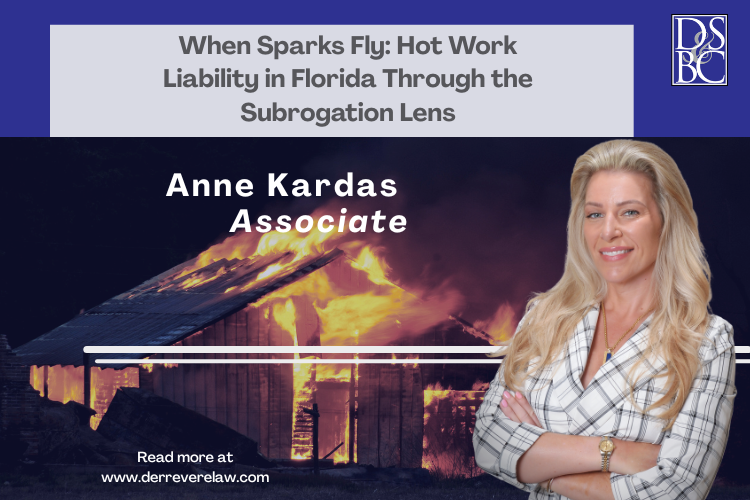When Sparks Fly: Hot Work Liability in Florida Through the Subrogation Lens

If you’ve ever walked onto a construction site in Florida and seen welding torches spitting sparks in the middle of a condo build, you know why the phrase “hot work” lives up to its name. In the subrogation world, those sparks don’t just fly—they ignite opportunity.
Every fire loss tied to hot work is more than just a claim. It’s a chance for insurers (and the lawyers who represent them) to recover millions in damages by holding the right parties accountable. Particularly in Florida—where the construction industry is booming and the legal landscape is complex—hot work liability has become a national proving ground for creative subrogation strategies.
Why Subrogation Loves (and Hates) Hot Work
On one hand, hot work is subrogation gold:
- Clear ignition source: Few things are as straightforward to a jury as “the torch sparked the blaze.”
- Multiple parties in the chain: From subcontractors to GCs to property owners, there’s usually more than one potential defendant.
- Documentation gaps & Departures from safety requirements: Hot work permits and compliance logs are required—but aren’t always kept. Missing safety paperwork or an employee’s failure to adhere to established safety protocol is a subrogation attorney’s dream.
On the other hand, hot work cases can be subrogation nightmares:
- Indemnity clauses and waivers of subrogation are written to try to slam the recovery door shut.
- Insurance exclusions for hot work have been creeping into policies, leaving subrogation plaintiffs scrambling to find a viable pocket.
- Finger-pointing among defendants can bog down litigation, especially when everyone insists the “other guy” was holding the torch.
Florida’s Special Heat
Florida’s case law is fertile ground for testing indemnity provisions and waivers of subrogation. Courts here scrutinize contractual risk-shifting with precision, and the state’s anti-indemnity statute limits how much liability can be pushed downstream. For subrogation plaintiffs, this creates both challenges and opportunities:
- Waivers of subrogation aren’t always airtight. Courts may carve out exceptions where negligence is egregious.
- Anti-indemnity provisions sometimes reopen recovery avenues against upstream parties.
- The sheer scale of Florida construction projects means losses are often high dollar—the kind that make national headlines and justify aggressive recovery strategies.
Strategic Takeaways for Subrogation Lawyers
If you’re on the plaintiff’s side of a hot work loss, here are three plays worth running:
- Audit the contracts backward and forward.
Don’t just assume the waiver of subrogation kills your case. Look for carve-outs, ambiguity, or conflicts between indemnity and waiver language. Florida courts love to dissect poorly drafted clauses. - Leverage safety failures.
Missing hot work permits, inadequate training, or sloppy supervision aren’t just regulatory violations—they’re leverage points that can overcome contractual defenses and bolster liability arguments. - Get creative with theories of liability
Don’t stop at negligence. Explore breach of contract, negligent hiring, or even product liability if defective tools contributed. Subrogation thrives when we refuse to color inside the lines.
Why This Matters Beyond Florida
Yes, I practice in Florida—but hot work subrogation isn’t a local quirk. With carriers tightening coverage and catastrophic losses making headlines from Boston to Los Angeles, this is a national issue with Florida as a trendsetter. Subro attorneys across the country can learn from the way our courts wrestle with waivers, indemnities and recovery rights in the wake of fire losses.
Sparks of Inspiration
Here’s the fun part: hot work cases may not be cocktail-party glamorous, but they embody what makes subrogation practice so compelling. We take the mess—the undated, unidentifiable products, charred beams, melted wiring, insurance exclusions, finger-pointing contractors—and turn it into meaningful recoveries for our clients. That’s where creativity meets advocacy and where thought leadership emerges.



